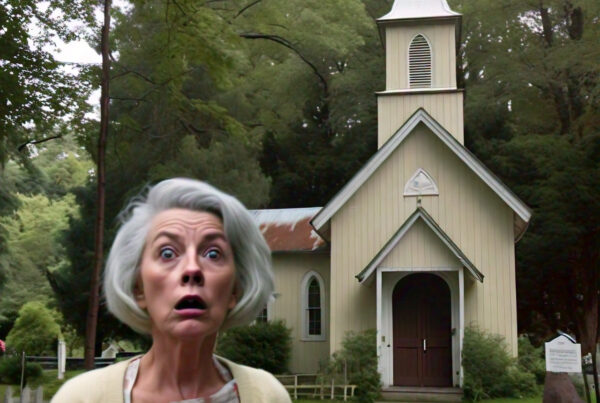Its been almost 20 years since the idea of being one church in multiple locations hit my radar. Churches like Community Christian in Chicago, North Coast in San Diego and North Point in Atlanta were pioneering the idea of adding sites instead of seats, and we jumped on the bandwagon. In the ensuing years multisite has exploded across America and around the world. By last count almost 10% of all Protestants in America attends a multisite church every Sunday. 50 of the churches on Outreach Magazine’s Top 100 Largest Churches list are multisite, and 9 out of 10 on their Fastest Growing Churches list have multiple locations. (The only exception is Orchard Church in Brighton, Colorado, and they are adding a second location in the coming months.) When we wrote the Multisite Church Revolution in 2006 we had no idea how prophetic the title would prove to be.
But now there are rumblings of the demise of the multisite model. High profile churches like Tim Keller’s Redeemer Presbyterian and Matt Chandler’s Village Church are spinning off their locations as autonomous congregations, and other churches are closing offsite campuses. Yesterday one of the early adopters of multisite, Dr. James Emery White at Mecklenburg Community Church in Charlotte, posted an article explaining why they are closing their satellite locations and consolidating everything back to their 80 acre campus in the suburbs. Is this the beginning of the end of the multisite fad?
While this is obviously the end of multisite for Mecklenburg, I don’t think it is a harbinger of things to come. While Dr. White is writing to his own context, he does hint that their reasons for closing sites can be extrapolated into other contexts. Let me explain why I don’t agree with his conclusions based on four of the premises he outlines.
It’s dated
Dr. White says that the multisite approach is nearly two decades old, and therefore is no longer new or cutting edge. He lumps multisite in with visitation and bus ministry as strategies that were once effective, but no longer valid.
Multisite isn’t a 20 year phenomenon; the roots of being one church in multiple locations go back to the New Testament. The churches at Corinth, Ephesus and Philippi likely met in multiple houses throughout the city, but Paul addresses them as one church. The first example of a multisite church in America that I am aware of began meeting in two locations in Charleston, South Carolina around 1800. It could be argued that the roots of Methodism are a form of multisite. Its certainly not a new idea.
Neither is multisite primarily a strategy for growth like bus ministry or visitation; it is a response to a challenge. How do we effectively reach and disciple the most people with limited resources? I would put multisite in the category of air conditioning, sound amplification and video projectors; each addresses a specific challenge in ministering to a larger congregation in a modern context. Although each is “dated”, I don’t see any of these going away soon.
It’s a physical approach in a digital world
Dr. White says,
“The multi-site approach is a physical approach in a digital world. Even worse, a physical response to a digital demand…We are finding that when someone is invited by a friend, instead of attending a physical campus, people first visit our website or some other online venture, and then – as a secondary step – attend one of our internet campus services. Our attenders even intuitively recommend that process. In fact, our internet campus is now our fastest-growing and second-largest collective venue.”
I agree that a church’s online presence is the new front door, but I don’t follow the logic that precludes physical locations. The church isn’t Barnes and Noble competing with Amazon. The first few steps for someone coming to faith may very well be online, but for almost all the faith journey leads to connection to a gathering of believers in a physical location. If we follow Dr. White’s logic to the end I assume Mecklenburg will be closing their remaining physical location soon.
The 20 minute rule is obsolete
The “20 minute rule” Dr. White refers to is the idea that people will not drive more than 20 minutes to connect with a church. His conclusion is that the digital presence of a church makes this rule obsolete because no one has to drive at all to visit.
While this is true for the first exposure to a church, it is still very challenging for people to connect deeply with a church that is more than 20 minutes from home. A church can certainly attract people who live further away, but unless the goal is for people to only attend online, this barrier still exists for many.
Is the end?
Toward the end of the article Dr. White says,
“There are other reasons churches might consider following our course, not the least of which are those outlined in a recent article you can read HERE on the challenges the multi-site approach presents for leadership, pastoral oversight, moral train wrecks and more.”
He doesn’t elaborate on how returning to a single location will solve these issues. Many single site churches struggle with leadership, oversight and moral train wrecks.
While Dr. White explains clearly the reasoning behind the decision at Mecklenburg to end multisite, I just don’t think his logic applies beyond his church.
At the end of the day here’s what I believe about multisite:
- It isn’t for every church, or even most churches
- No two multisite churches are the same
- Multisite will continue to evolve and morph
- Unhealthy leaders produce unhealthy churches regardless of how many locations they have
- Multisite is a strategy for Kingdom growth
- Multisite isn’t going away


